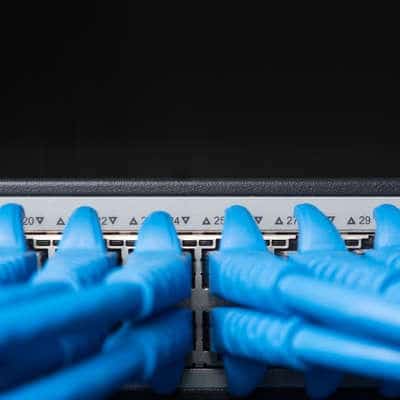
A crucial step of setting up your business is the implementation of a physical infrastructure, including cabling and electrical lines. Unfortunately, the same setup won’t work for two very different businesses, so you’ll need to put considerable time and effort into the cabling process as a whole. Here are a few ways that you can make the process easier.
However, it’s important to note that this article will only help if you have yet to fully implement a cabling strategy, or if you’re looking to implement a more dynamic one. Cabling is a time-consuming process, and one which you want to get done right the first time so that you don’t have to waste even more time fixing mistakes down the road.
Consider Your Wired Endpoints
How many wired devices does your organization have that must be physically hooked up to your in-house network? Examples of wired endpoints could be anything from servers to workstations, and how they all figure into your infrastructure is good information to have before setting out on your implementation journey. Depending on how many devices you have, your optimal network infrastructure will change, so you want to consider this before all else.
One particularly helpful tip is to plan ahead, even if you don’t anticipate it. Run twice as many cables as you think you’ll need. You’ll be surprised by how much time and money you’ll save just by doing this. In the event that you need to implement new workstations or expand to a different part of your office, you’ll be less likely to run into cabling problems.
Ask Questions to Find the Right Setup
When laying cable, you have to be mindful of what you want to accomplish; and, what kind of property you are dealing with. You need a knowledge of the building specifications to avoid making any large oversights. How large is your office? How many floors do you have? How many users do you have to accommodate? Do you want to go wireless? If so, do you know what materials the walls are made of? These are the types of questions (and many more) that have to be answered before you lay the first wire. Your best bet is to bring out a floor plan to get the information you’ll need.
Consider the Future
Businesses, especially small businesses, are more focused on keeping the lights on and building profitability than considering what will happen if everything goes well for the next few years. One problem with a strictly contemporary view of things is that you never quite know when success is going to come. For the growing business, considering the flexibility of your IT is essential when setting up cable for your workspace. Wire your office with the future in mind to ensure that when you are successful, you are able to accommodate new workers and solutions proficiently.
Be Mindful of Solid Practices
Running cable has its own best practices. Depending on what kind of cable you are running, what solutions you are installing, and what type of setup you are going for, it’s best to keep in mind traditional best practices for cabling. For example, Cat5 cable should not be run along with electrical cable. They shouldn’t be placed at 90-degree angles. Some types of cable have different makeups than others, so keeping in mind the materials you are working with becomes essential to complete an exemplary cabling job.
If you’d like more information about cabling an office, wireless solutions, and enterprise-level IT support call K² Technologies today at 307-686-3025.

 Mon-Fri 9 AM to 5 PM Mountain
Mon-Fri 9 AM to 5 PM Mountain 888-686-3025
888-686-3025



